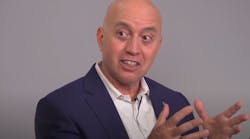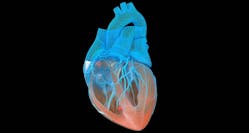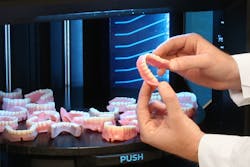On September 28, Stratasys shareholders will cast their votes as to whether or not to approve the additive manufacturing giant’s purchase of rival Desktop Metal, or whether repeated entreaties by 3D Systems to purchase Stratasys present a more attractive financial arrangement. This will (ostensibly) be the end of an M&A drama that’s dominated the additive manufacturing narrative for months.
The final part of our 3-part interview with Zeif (read Part 1 here and Part 2 here), we ask him whether generative AI holds any bearing on additive manufacturing, and learn more about the company’s work with pre-surgery anatomical models and upcoming advancements in additive technology, all of which ought to hold true regardless of who owns the company.
Does Generative AI Hold Promise For Additive?
IndustryWeek: Do you see in the additive manufacturing world a new round of interest in AI, thanks to all the hype around generative AI? Will generative AI create additional capabilities for additive technology?
Yoav Zeif: We invested a lot of money in AI, even before it became a trend, because one of the things that is clear for us is that we need to improve our reliability and make sure we take out as much labor as possible where it’s not necessary. AI can solve a lot of [these problems].
Take, for example, reliability and the accuracy. We invested in a company called Riven that developed technology to scan a [3D printed] part … and compare it to the CAD file that you entered at the beginning [of the process]. If you have enough parts … the machine knows how to correct the CAD file based on the specific [printing process] and the material, so you will have a more accurate part at the end.
AI for us is important because we want to close the loop between the intent and the outcome.
For example, we are the leaders in anatomic modeling, [for] pre surgery in very complex operations. The surgeon, for example for [operations on infants], wants to print the brain or the heart … and to practice on it before the surgery. I met probably the leading [infant] surgeon at the Mayo Clinic and he told us this is the best technology he’d ever used because when he got into the operating room, it’s not the first time that he’s opened the heart. There are no surprises.
We take an MRI or a CT scan and convert it into a CAD file, and we print it. We are the only company that knows how to imitate human tissue. [Editor’s note: Several other additive manufacturers offer pre-surgery organ model printing. Stratasys clarified that it uniquely employs multi-material printing to increase simulation fidelity.]
Using software called the Digital Anatomy Creator, a surgeon can say ’Okay, this is an old [patient], he has softer bone or a stronger bone,’ and he can tweak [the CAD file]. … Now we have a solution [using AI] to do this conversation based on … examples in the network [such that] the machine knows how to convert [the MRI or CT scan] to a CAD file.
New Additive Software and Lingering Dental Challenges
IndustryWeek: Do you see for the immediate future any other software-based advancements in additive technology?
Yoav Zeif: When I came to this industry, I said the first thing I want to do is to print parts. So I took one week to print parts in FDM on extrusion in one week and learn the machines on material jetting. And I found out that to print the part I needed four to five different software programs. I needed to simulate, and design, I needed the CAD, I needed to render...and each time I had to save, to export, to input to another software.
I said it doesn’t make sense. How can I be a manufacturer if I cannot sit at my table, have one screen, design, send to print and make sure I have the traceability that I met the intent or not? So we built a software platform with partners that can connect to all of our different printers and in the future to other printers. So this [is] the mindset of really solving the problems of our customers … and [my] customers are manufacturers.
IndustryWeek: We have one last question. Dental device manufacturing is currently a challenge for additive manufacturers and a focus of R&D efforts. Why is this so difficult?
Yoav Zeif: Because you need to meet specific standards and requirements. … You need FDA approval. It’s all about material science. How you create the right feel. … It is fascinating because you need the material, but also you need [to make sure] this material will meet the technological constraints. This is really high-end material science.





